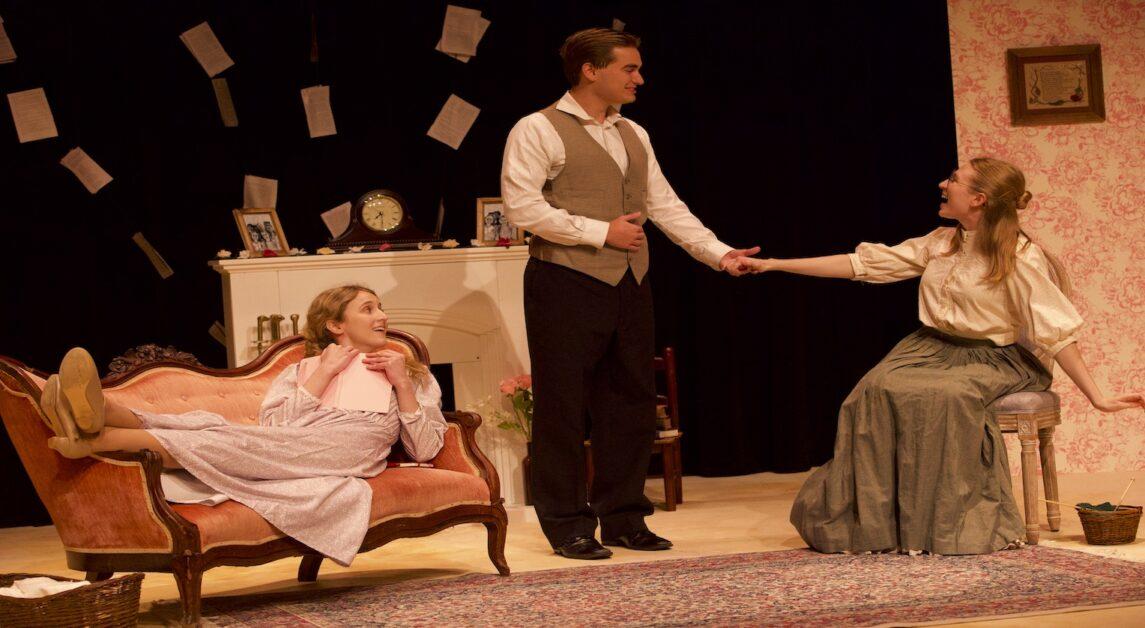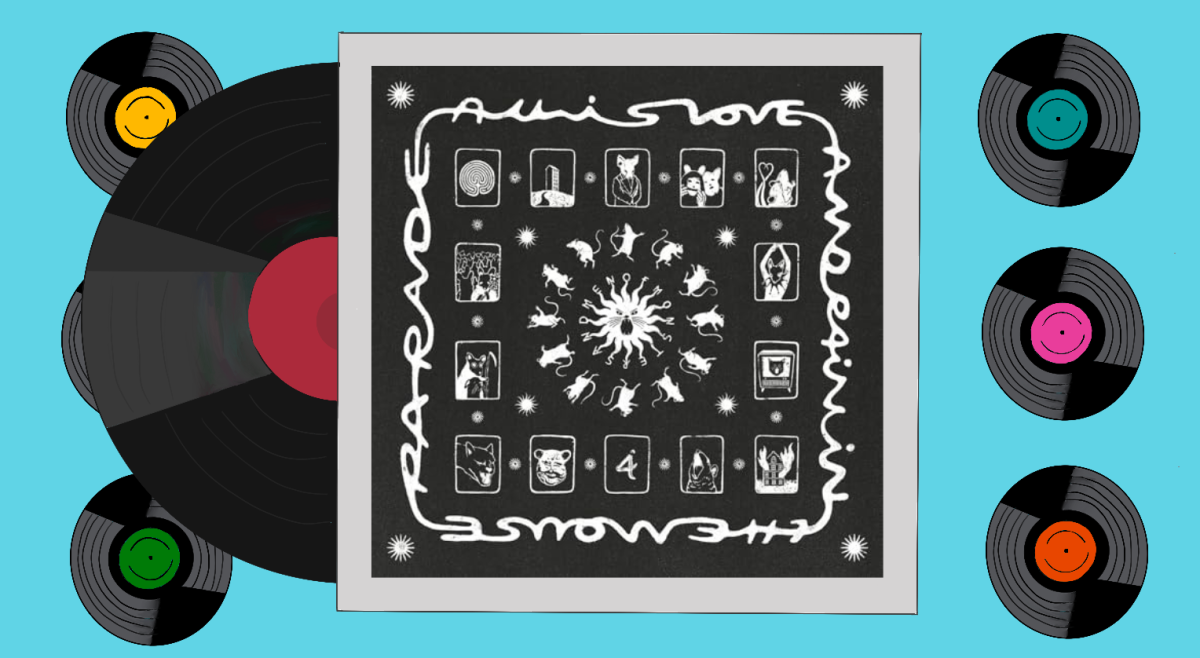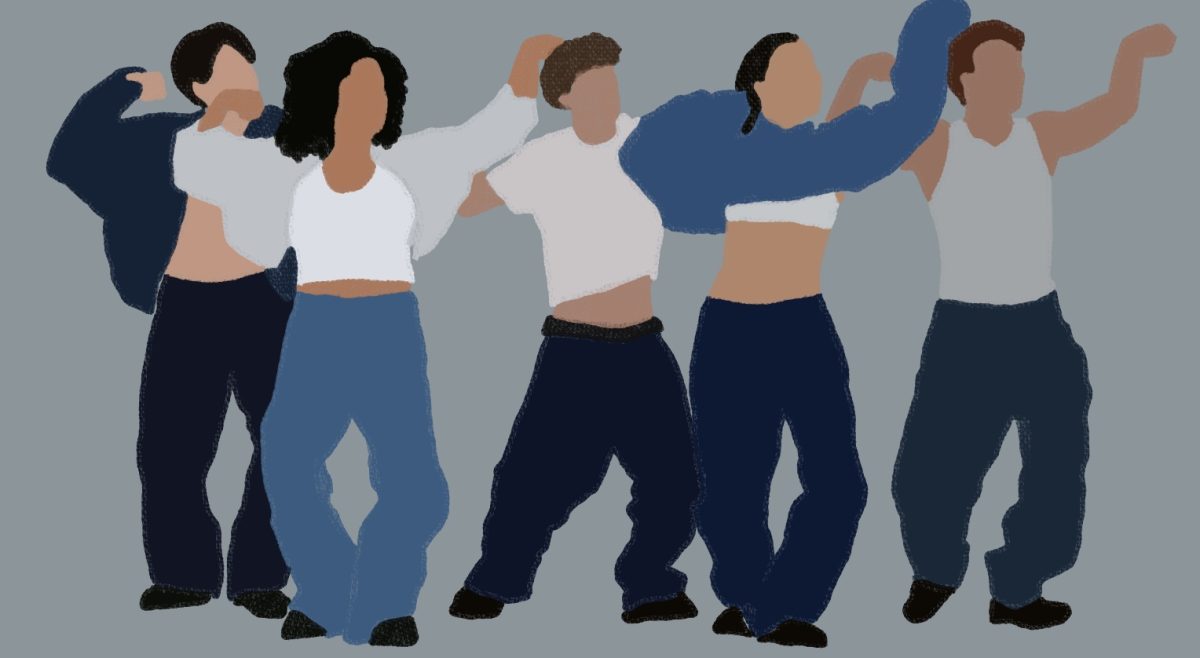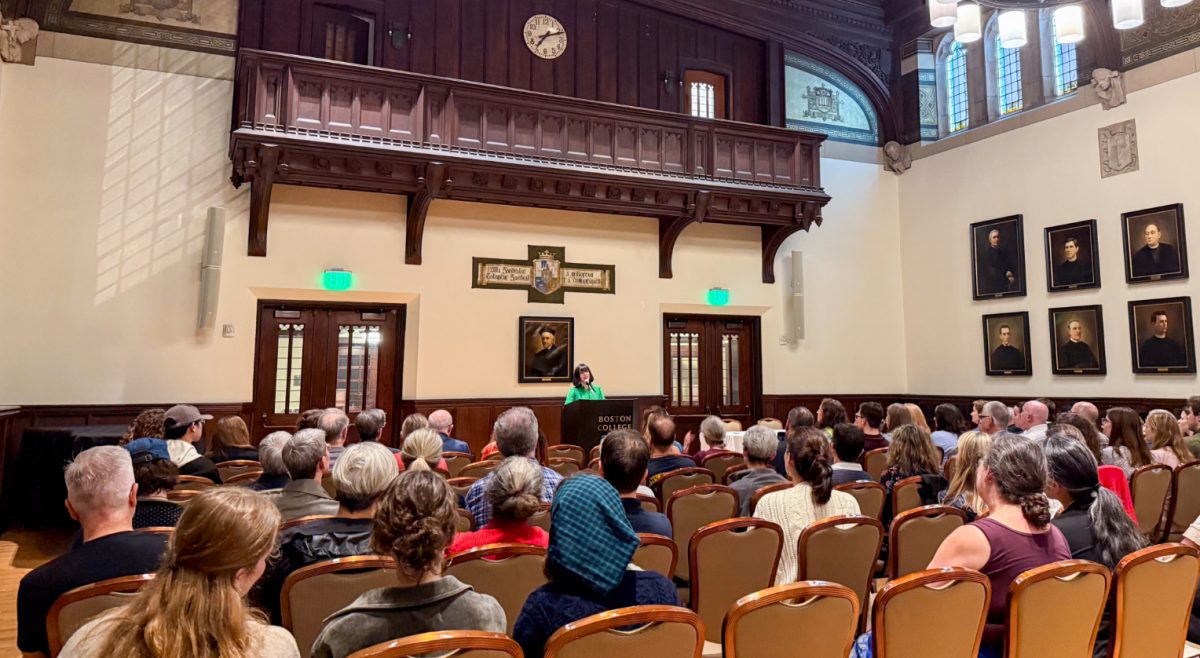Little Women is an iconic, empowering story that has stood the test of time since Louisa May Alcott released the novel in 1868. Boston College Dramatics Society’s production of the play adaptation of the novel upheld the legacy of the original.
The play, directed by Arianne Horan, MCAS ’25, opens with Jo March (Chase Kerman, LSEHD ’26) as she writes stories of wizards and damsels in distress. Jo’s sisters Beth (Molly Casper, MCAS ’26) and Meg (Margaret Rankin, LSEHD ’26) listen to Jo adoringly as the sisters join the rest of their family at the kitchen table. Their banter is a source of comedy throughout the play.
The scene stuck out because it brought warmth to the characters right from the opening of the play. The simple scene showed a realistic sisterly dynamic, and Horan said it was based off the same scene in Greta Gerwig’s 2019 film adaption of the novel.
“I wanted a more central focus on the sisters and their adolescence similar to how Greta does in the movie,” Horan said.
Horan said she wanted to highlight Beth in her production of the play because she played the character in her high school’s production of the show. This focus was evident, with Casper’s stage presence as Beth bringing a heartfelt tenderness to the play.
The scenes that follow the show’s opening are at the heart of the meaning of Little Women—morality and kindness, with the theme of family tying it together.
Jo’s mother Marmee, played by Diana Marsan, MCAS ’25, comes back home and asks the girls if they would be willing to give up their Christmas presents so that their poor sick neighbors, the Hummels, would have food. The girls all reluctantly agree but decide that they shall spend $1 on themselves for gifts. The girls head into the market singing a small tune.
“Glory, glory Hallelujah / Glory, glory Hallelujah / Glory, glory Hallelujah / His truth is marching on,” the sisters sing.
The song, “Battle Hymn of the Republic,” was written by abolitionist writer Julia Ward Howe during the American Civil War. Characters sing the hymn many times throughout the play, giving the audience context into what the March family believes in, but also foreshadowing the hard times that will befall the family later in the play.
Dramatics Society’s iteration of Little Women gave prominent roles to Beth and Meg, who are rather unnoticed and glossed over in the movies. Little Women is a story of sisters in their adolescence and growing out of it, so Horan’s decision to spotlight some of Jo’s other sisters is something powerful to watch.
Each of the actors brought something new yet familiar to each of the characters, which is an accomplishment for a play with so many iterations. The delivery of each March sister might have left the audience wanting more.
Kerman brought a familiar fiery spirit to Jo, and Rankin brought new depth to Meg with her fleshed out character arc. The actresses captured the duality between naivety and ambition, reminiscent of Florence Pugh’s performance in Gerwig’s adaptation.













